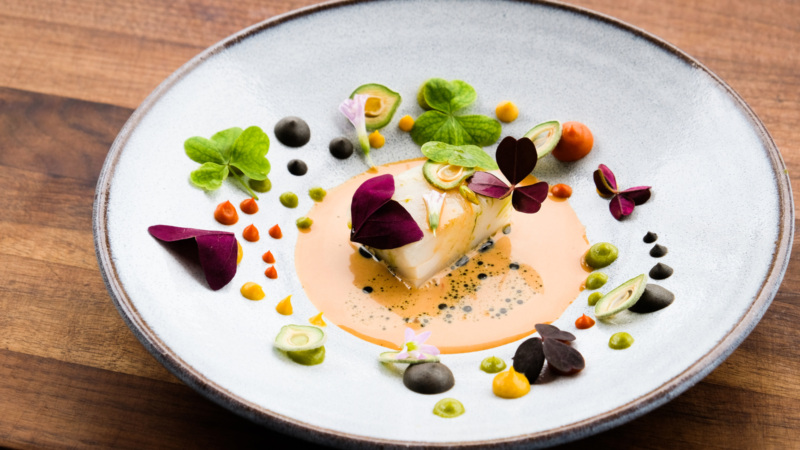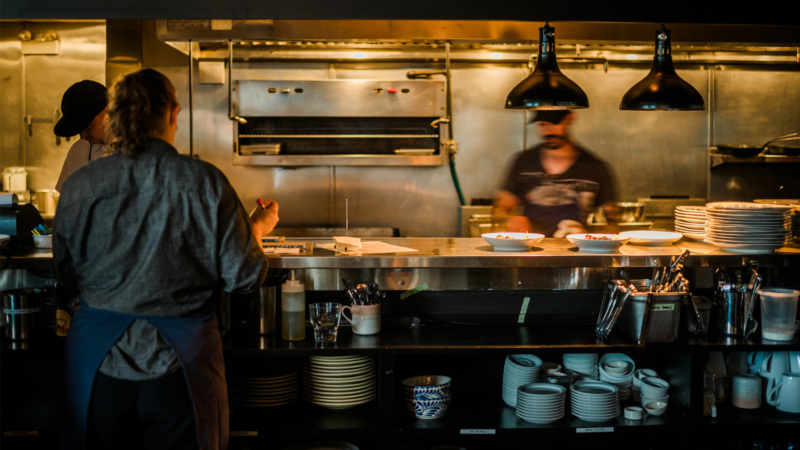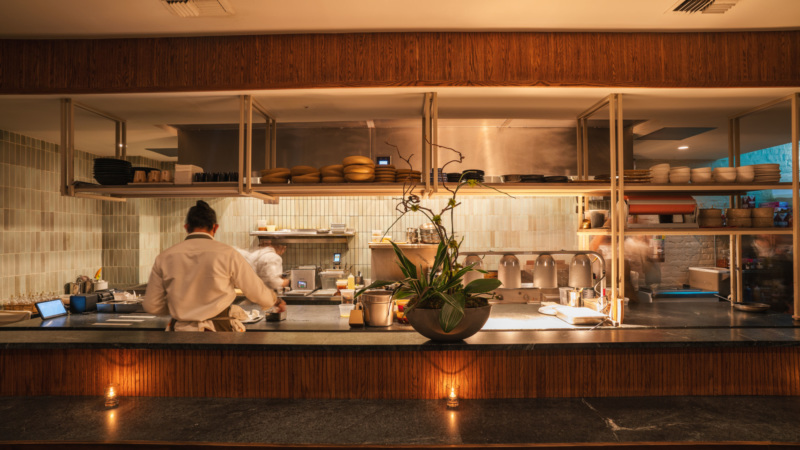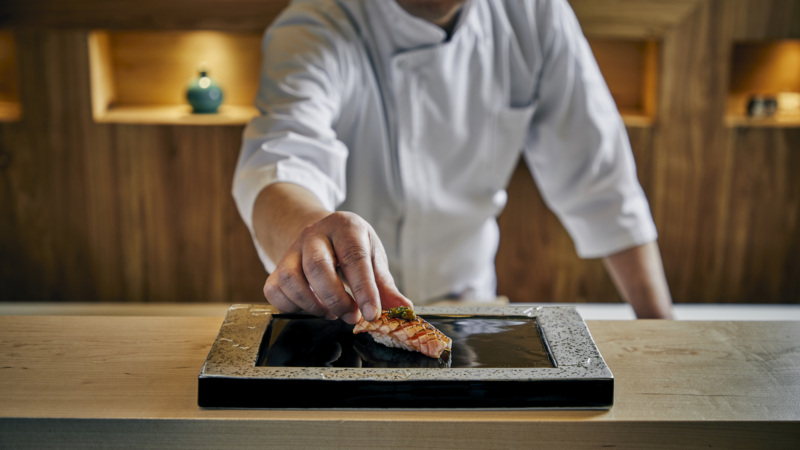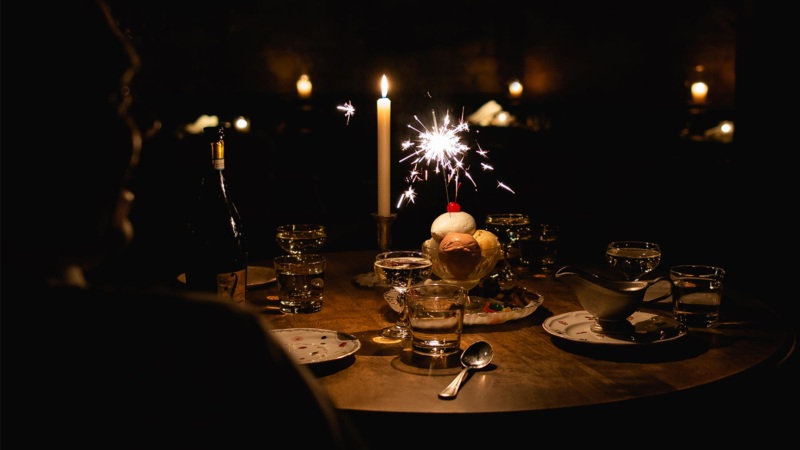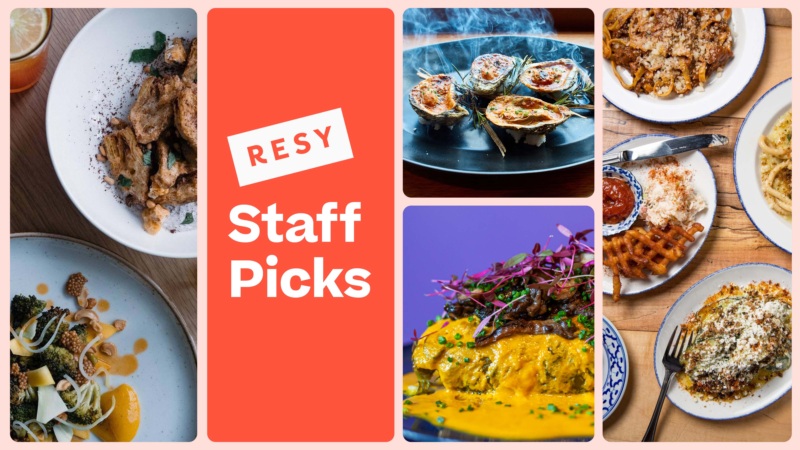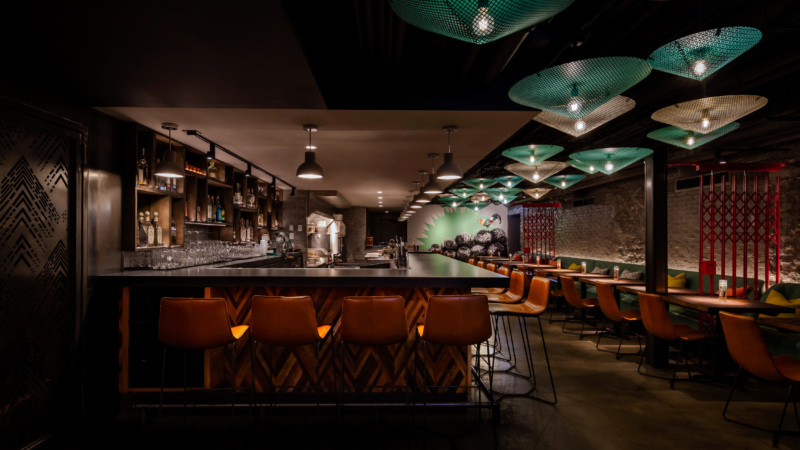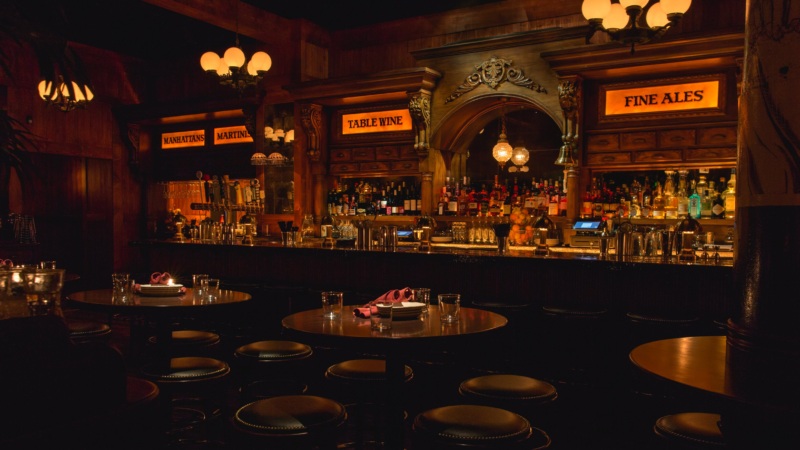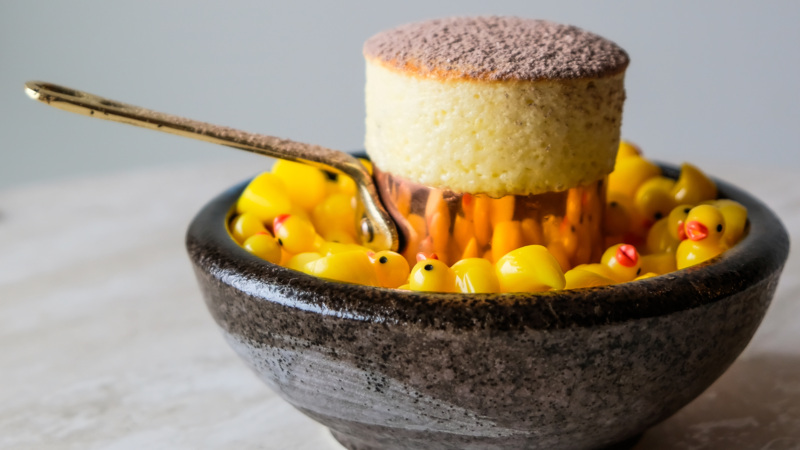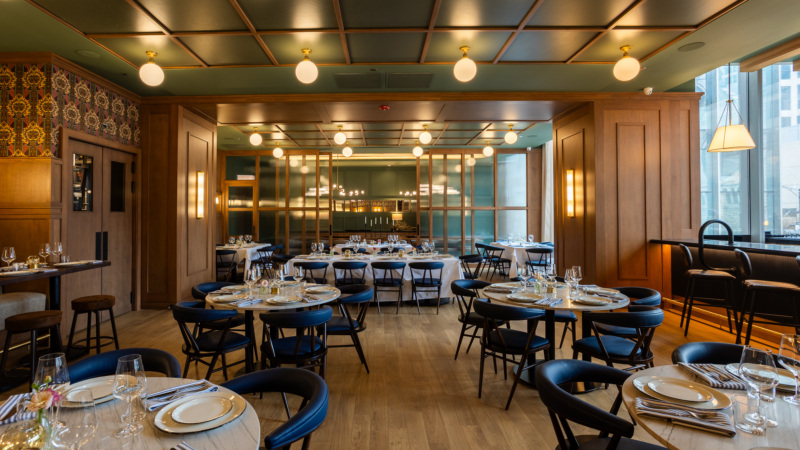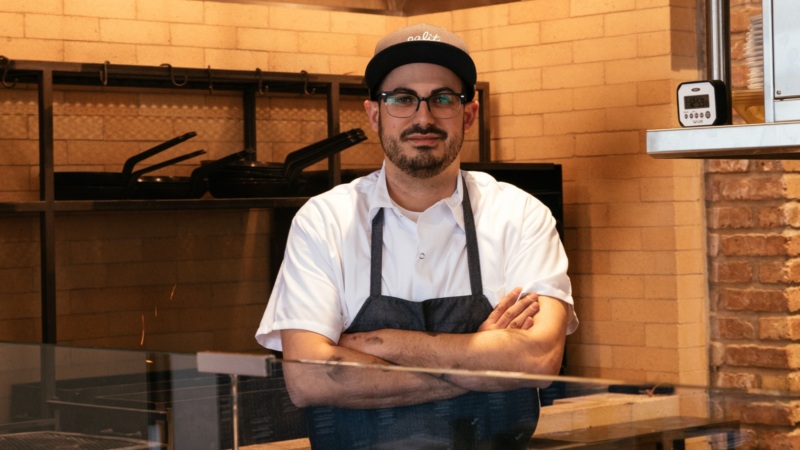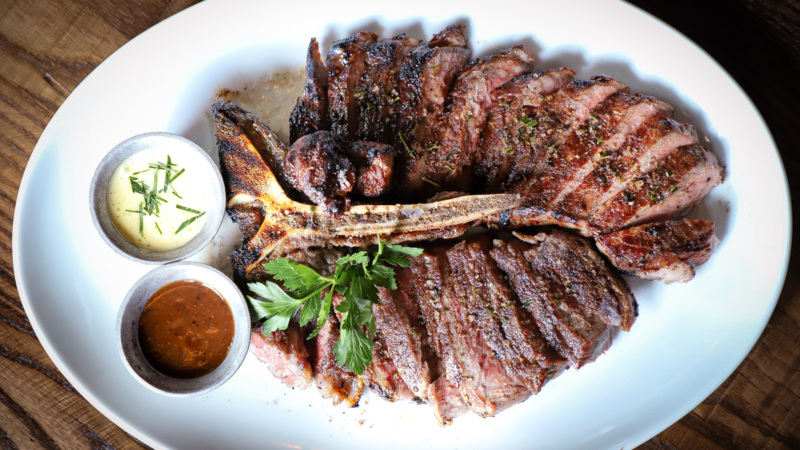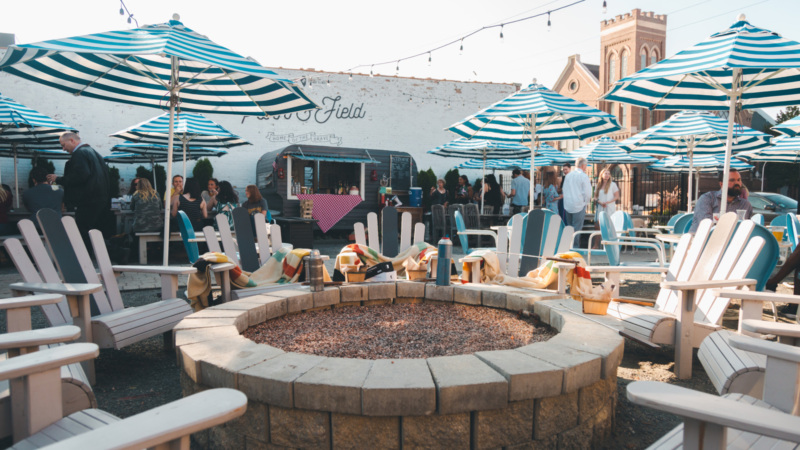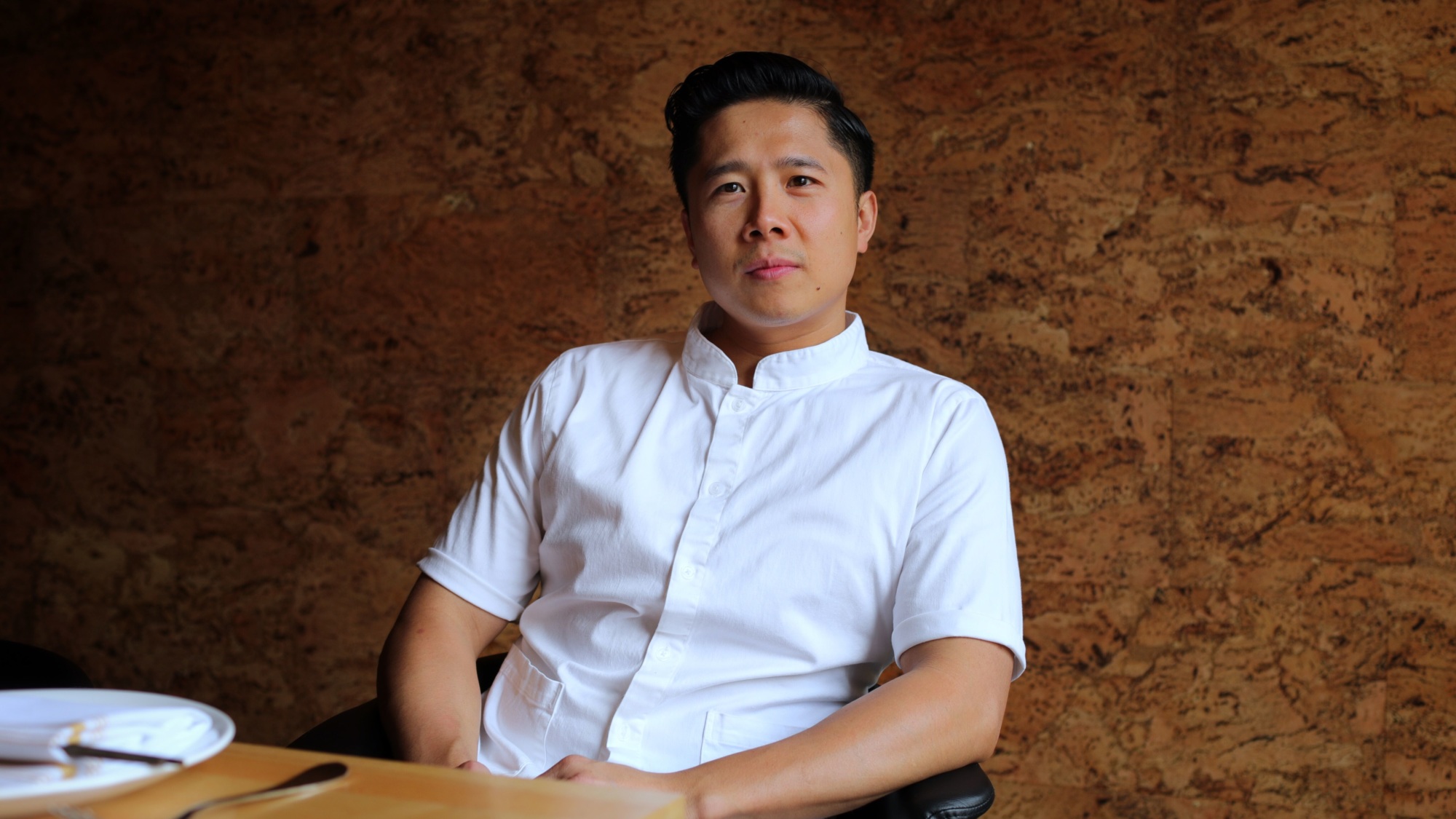
15 Questions with HaiSous’ Thai Dang
In 15 Questions, we strive to uncover the inner workings of a chef’s mind. From the ingredients, techniques, and philosophies they’re obsessed with to the exciting dishes and projects they’re working on, 15 Questions gets to the heart of what we all know is true: the kitchen is where the magic happens.
A year out from its James Beard Awards nomination for Best New Restaurant, HaiSous is settling into its standing as a newly-minted icon of Chicago’s dining scene. Just days before Chicago Tribune restaurant critic Phil Vettel praised partners Thai and Danielle Dang for excellence and innovation, we caught up with chef Thai Dang on his entrepreneurial and triumphant return, philosophy on immigration, and keeping business in the family.
Resy: What’s it like to run a restaurant in the wintertime in Chicago? What are the hurdles to keeping a full book when it’s well below zero degrees?
Thai Dang: Keeping the books packed is really just about following up on all of our reservations and confirming with our guests. It doesn’t even slow us down; guests [are] still coming, fighting through the snow and the negative temperatures. Knowing that people are willing to come all the way down to Pilsen for us is really special, it makes our staff so excited, and I always remind them that we need to create and maintain the best experience [to accommodate] them.
Tell me a little bit about your background. Have you always cooked Vietnamese food professionally?
My background is in fine dining. I worked my way through Washington, D.C. and then I moved to Chicago to work at L20; I knew that Michelin was in town and I wanted to be a part of it.
I was so inspired when I traveled through Spain. My buddy and I arranged a 14-day trip, where we rented a car and ate every meal at a Michelin-starred restaurant. We went to El Celler de Can Roca, El Racó de Can Fabes, Santi Santimaria—just great, amazing restaurants. And we drove to Laguiole to visit Michel Bras at his restaurant. When I got back from that trip, I decided to move to Chicago to work for Laurent [Gras]. I was very fortunate to land a job after that as the chef de cuisine for Ria, which was a Michelin two-star restaurant. So, for HaiSous, I wanted to take it back to basics and showcase Vietnamese food in a more refined way.
How would you describe your cuisine at HaiSous?
I would say our food is like going over to your Vietnamese friend’s house for dinner, but the execution is different. We have a lot of Vietnamese guests who travel, literally hours, to eat at HaiSous. I see old aunties—Vietnamese call their [elders] auntie or uncle, as a sign of respect—eat the food and a grin appears on their faces. [Because of the presentation] they don’t think it’s Vietnamese, but when they taste the food nine times out of ten—I can see a light bulb flicker on for them. For me, that’s the most gratifying feeling ever.
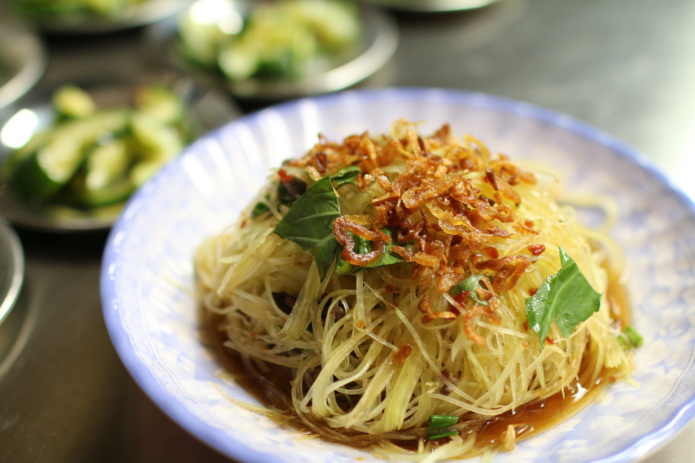
What are some of the standout dishes on your menu?
What I’m known for is the papaya salad. I’m the youngest of six brothers and three sisters. We left Vietnam in the late ‘80s, and we were refugees in the Philippines, in Bataan, until we were fortunately sponsored by a Catholic organization and a family in Champaign–Urbana, Illinois.
I grew up eating what my mom could afford to make, so it was very simple, homemade food that she adapted with American ingredients. On special occasions, my sister would throw down and she would make this papaya salad. I would get so excited because it was so packed full of flavor. A lot of people think about papaya salad as the Thai version– with the fermented shrimp paste, which is very funky, very spicy, raw and in your face. The Vietnamese version is different, it’s more like street version—it’s savory, it’s sweet, it’s textural. So, after I learned to cook, I asked her to show me how she made it, and I used that as a basis to develop my own [recipe].
Vietnamese love fried wings. There’s a famous dish called cánh gà chiên, and you’ll find it on a lot of Vietnamese menus and in Vietnamese homes. [My version] is special because I had the tools to understand the fundamentals of fish sauce, so I could break down [the recipe] and manipulate it in a way that Vietnamese don’t know how to do. Ethnic cooking is passed down from generation to generation, so people don’t really question it or change it up, but I was fortunate to go to culinary school and work in all these kitchens, under all of these chefs.
Those dishes tell the story of the origin of Vietnamese food, as well as the complexity behind it, without bastardizing it. I don’t fuse ingredients, I don’t add butter or a Japanese ingredient, they’re 100% Vietnamese—but [my focus is on] finding the best product, and extracting it to make it feel distinctly HaiSous.
How did your mother’s cooking have an influence on what you serve at HaiSous?
Every time I would wake up on a weekday and she was home, she would make me these egg dishes; on weekends, she would do more elaborate dishes, like pho, bún bò huế, bánh cuốn– homey noodle dishes that we would enjoy together every Saturday, and then eat again on Sunday when we got out of church. It was just so comforting. So, when we decided to open up for brunch, I brought those dishes back, but I created my own. We’re known for our noodle dishes. I use seven different types of noodles, and they’re all variations of Vietnamese noodle dishes I found over in Vietnam. My mother is from the North, but when the French left in 1954, her family migrated down to the South, along with a lot of Vietnamese before the war. She knew some Northern dishes, and some Southern dishes, so I grew up eating a variety. We flew her in to launch pho, and the first pot of pho we served was hers.
Keeping things in the family is a theme. The coffee you serve at your next-door café, Cà Phê Đá, is made from beans grown by your family in Vietnam?
It’s grown, harvested, and roasted by my sister-in-law’s family. They’ve been doing it for 30-something years in Đồng Nai, Hố Nai—a little town an hour and a half northeast of Ho Chi Minh City, also known as Saigon. When we decided to open this coffee shop, [our beans] had to be from the family.
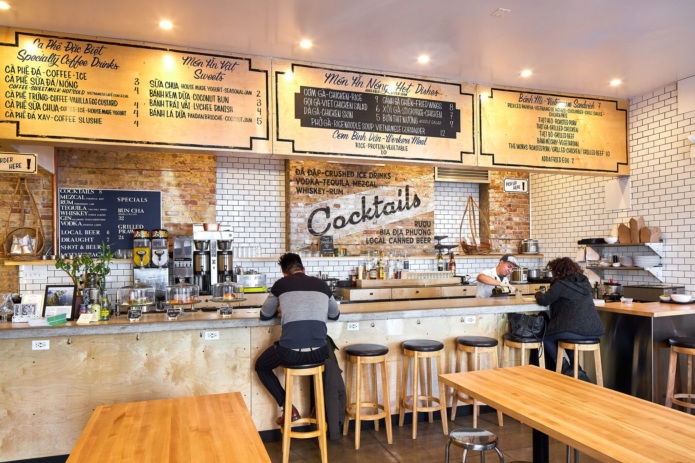
How do you showcase their products in the beverages at Cà Phê Đá?
I’m talking hardcore Vietnamese coffee: Vietnamese coffee with yogurt, Vietnamese coffee with egg custard, coffee with ice, hot coffee. We do a coconut slushy—things you won’t find anywhere in Chicago, if not nationwide. We specialize in these items because the French really influenced Vietnam. When they occupied and colonized Vietnam for almost 100 years, we were peasants, farmers. We were exposed to these specialty coffee drinks, but we couldn’t afford fresh milk like the French could. So we adapted to condensed milk; what we were able to find. And that’s what makes Vietnamese coffee so interesting: it’s tailored to the people, using resources we relied on during the days of war and poverty. Cafés in Vietnam make egg coffee from raw eggs that they leave out all day (laughs). But at HaiSous, I cook the eggs, I make a sabayon, I bring it up to temperature. So, for me (again) it’s about understanding the fundamentals of cooking. Just like in architecture, if you understand how to build, you can build as high and as big as you want. That is my goal here at HaiSous and Cà Phê Đá.
What does it mean for you to operate a restaurant in the Pilsen neighborhood?
Before this iteration of Mexican immigrants, Pilsen was mostly Eastern Europeans. We live right down the street, six minutes away. We wanted to be in the neighborhood that we fell in love with, that we’re a part of. Also, if you build it, they will come. I’m very fortunate that the architect and designer of HaiSous was my wife.
We really wanted to showcase something new, something refreshing, but we wanted to embody the neighborhood for what it is: a point of entry for immigrants. I’m from an immigrant family and that’s what living in this country—you know, the land of milk and honey, the pursuit of happiness, the pursuit to be able to do this—is all about. We’re very fortunate that the neighborhood and the community have been really supportive and understand what we’re doing, and it’s our social responsibility to communicate to the public that the builders were all from Pilsen, the opening staff was from Pilsen. That’s what we’re all about.
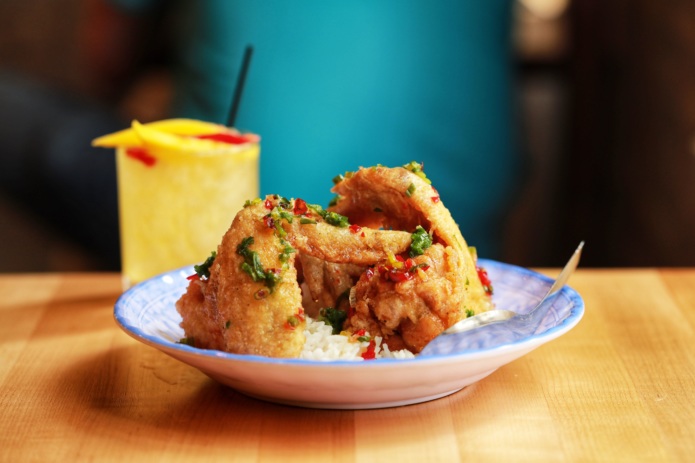
What would you say were the most important learnings from the hurdles you faced in having to close your last restaurant, Embeya?
Honestly, the best feeling to come out of is to know one’s worth. I learned such a valuable lesson, which is that you should always think about others before you think of yourself. You need to really evaluate what you have to contribute, because when you value yourself and understand what it is that you’re doing, and you have respect for your work ethic, [you can pass that on]. I know what I am capable of and I’m fortunate to be able to have the platform and the opportunity that I do, so I can never abuse it. When you are a chef you have people who look up to you, who call you ‘chef,’ or even if you’re an operator or a manager… if you’re climbing a ladder and you have people underneath you, you have to understand that their lives that are affected by your actions. So, [it reminds you] to always be grounded.
HaiSous is a revenue-sharing operation, which means that employees get a wage and they also share in the profits from the restaurant. Why is that important for you?
Danielle and I really wanted to be fair. We wanted change, so we had to be the change. I always say that to our staff.
In this industry, you have big companies who only care about the bottom line, pouring in large amounts of money to open multi-million dollar establishments, and investor optics to show that they are successful. After the heartbreak from Embeya, we re-built our lives again all on our own. We self-funded, we became the general contractors, we were our own financial advisors. We wanted our staff to understand that their dedication is also part of the success: that their investment in themselves for wanting to be better at what they do, and wanting to help us, is rewarded. They invest in us, we invest in them, and therefore it’s a symbiotic relationship. The better they are, the better we will be; their success is our success. A lot of restaurant groups, when they need a general manager or an assistant GM will just put out an ad and hire externally. We believe in promoting internally, because these are the people that have been with us, who demonstrate commitment and leadership. We always joke that we’d rather have our staff be happy, and take less, than to take in a bigger [piece of the] pie and have our staff suffer. Longevity is much better; [we’re interested in] long-term over short-term success.
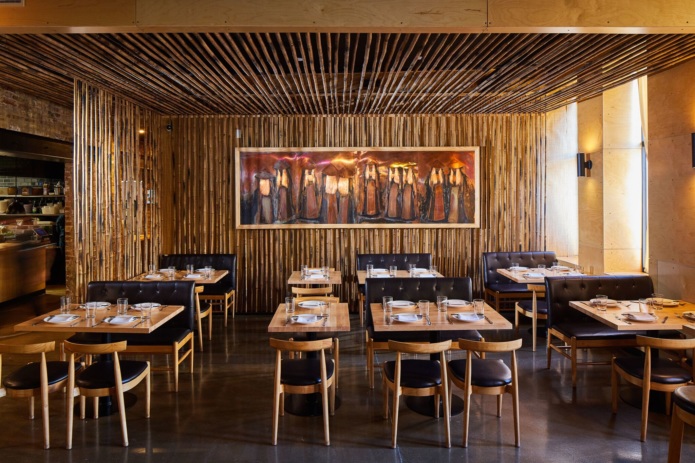
How did it feel to be nominated for the James Beard Award last year?
You have to be realistic; we were just brand-new. To get a nod and be nominated was such an amazing feeling, but I told my team, ‘don’t let it blindside you, don’t let it say we’ve made it, because we have not.’ There are restaurants that have been open for five or more years longer than us, and they’ve never been recognized, so it’s a humbling experience, but one that we should not take for granted. It was such a great honor, but it was an honor that motivated us to [be] even better. We need to keep at our work, the cooks in the kitchen need to keep producing amazing product and the front-of-house needs to be consistent in hospitality, and we need to hone in on that.
How often do you travel to Vietnam?
I try to go to Vietnam at least once a year, and sometimes two or three times. We’re taking a trip next week with R. Crusoe & Son, a travel agency here in Chicago that has been such a great supporter of our work since Embeya. A lot of our guests at HaiSous and Cà Phê Đá were asking us about tours and recommendations, so we picked it up again. They coined it Delectable Delights Through a Chef’s Eyes, and it’s the equivalent of hanging out with the Dangs. It’s curated in such a way that it tells a story of Vietnamese cuisine from the North to Central to Southern cuisine, and we finish the tour with a special lunch cooked by my aunt in Vietnam, in my grandfather’s courtyard. The guests get to see the furniture, the coffee, and the bamboo that we source for the restaurant, so they see the journey of how we built HaiSous to what it is to this day.
Is that where you find most of your inspiration?
Oh, yeah. When we talk about ethnic cooking, you get a lot of American chefs, like Andy Ricker (Pok Pok, Portland, OR) or David Thomson (nahm, Bangkok) for Thai food, that really devote themselves to a cuisine. They understand the language, they travel—not just for a week, they didn’t just say ‘hey, I went to Japan for a week now I’m going to open a ramen shop.’ They live in those countries, they immerse themselves. I have so much respect for them, for their work, for their commitment to that cuisine, I’m inspired by that. And so here I am, a Vietnamese-born [chef] who grew up in the American system, and now I have the opportunity to really showcase food from [my home country.] My work is always to bring Vietnamese food to the next level, to really shine a light on [the fact that] Vietnamese is not just pedestrian street food to be enjoyed in hole-in-the-wall pho shops or bánh mì shops. It’s about the people, the hospitality, the ingredients, everything.

Any favorite eateries in Vietnam that you can name?
If you go to the North, our favorite restaurant for indigenous cuisine is called Cua Hang Hai Man. You eat literally sitting on the ground, on mats, family-style. As a child in Vietnam, I went to school, but I would always go home for lunch. For breakfast, you do whatever you want, but lunch and dinner we always ate with each other. No matter what you’re doing, you drop everything, and you come home for lunch. And if you’re not home for dinner, you’re being questioned why. So this restaurant is so homey, and it taught me about my parents’ cuisine up in the North.
There’s another spot in Hội An called The Market Restaurant and it’s run by a woman named Vy. She created this concept that really showcases Vietnamese central cooking, with stations where all of the chefs are making fresh noodles, fresh rice paper. It educates you on our cuisine and it’s such an awesome thing because back in the day, you either had the skill to make that product, or you weren’t able to eat it. Now, you can buy noodles and it costs pennies, but people don’t understand the laborious process that goes into it.
And in Saigon, Cuc Gach Quan is a modern, Southern-style Vietnamese restaurant. We try to travel to North, Central, and Southern Vietnam every time.
What restaurants in Chicago do you love to eat at? Where are you a regular?
We’ve been going to ATK Andy’s Thai Kitchen for years, and the other place we love is Elske. It has such a cool vibe, and it’s run by a husband-and-wife team, Anna and David Posey. They own it, they operate it; Anna is the pastry chef, David is the chef. They have a symbiotic relationship, just like Danielle and I, and so Elske is a spot that we love to showcase to our friends any time they ask for recommendations. We’ll make a reservation for them or go and we’ll meet them there. Then there’s Smyth and The Loyalist, where John Shield and Karen Shield are doing their concept themselves. We just love that.

